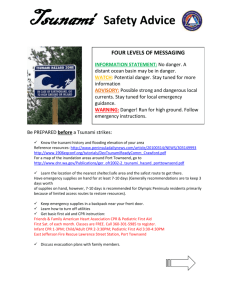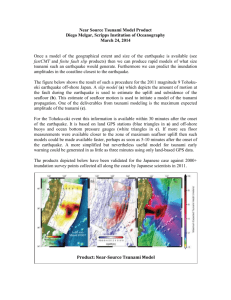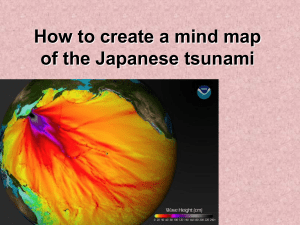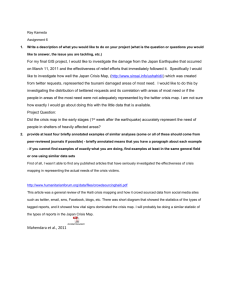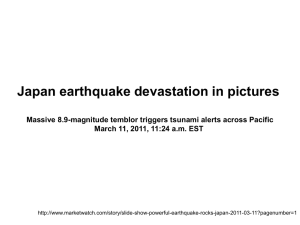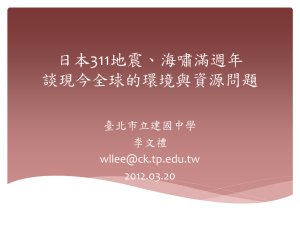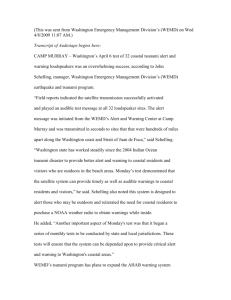File - Aloha Volleyball Association
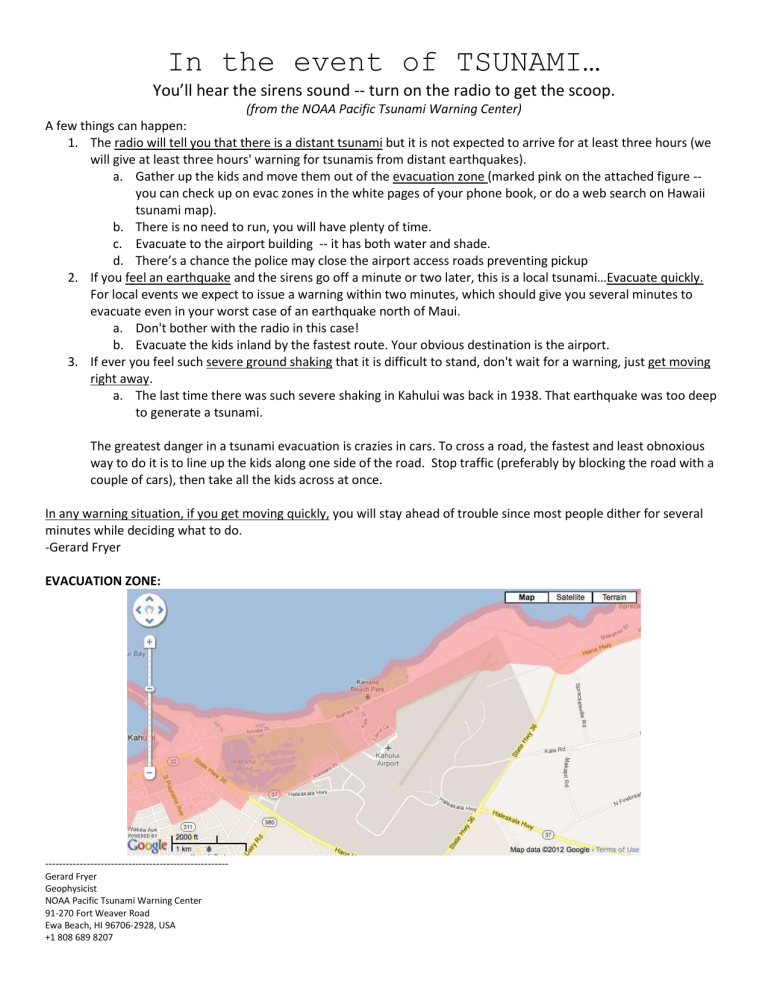
In the event of TSUNAMI…
You’ll hear the sirens sound -- turn on the radio to get the scoop.
(from the NOAA Pacific Tsunami Warning Center)
A few things can happen:
1.
The radio will tell you that there is a distant tsunami but it is not expected to arrive for at least three hours (we will give at least three hours' warning for tsunamis from distant earthquakes). a.
Gather up the kids and move them out of the evacuation zone (marked pink on the attached figure -- you can check up on evac zones in the white pages of your phone book, or do a web search on Hawaii tsunami map). b.
There is no need to run, you will have plenty of time. c.
Evacuate to the airport building -- it has both water and shade. d.
There’s a chance the police may close the airport access roads preventing pickup
2.
If you feel an earthquake and the sirens go off a minute or two later, this is a local tsunami…Evacuate quickly.
For local events we expect to issue a warning within two minutes, which should give you several minutes to evacuate even in your worst case of an earthquake north of Maui. a.
Don't bother with the radio in this case! b.
Evacuate the kids inland by the fastest route. Your obvious destination is the airport.
3.
If ever you feel such severe ground shaking that it is difficult to stand, don't wait for a warning, just get moving right away. a.
The last time there was such severe shaking in Kahului was back in 1938. That earthquake was too deep to generate a tsunami.
The greatest danger in a tsunami evacuation is crazies in cars. To cross a road, the fastest and least obnoxious way to do it is to line up the kids along one side of the road. Stop traffic (preferably by blocking the road with a couple of cars), then take all the kids across at once.
In any warning situation, if you get moving quickly, you will stay ahead of trouble since most people dither for several minutes while deciding what to do.
-Gerard Fryer
EVACUATION ZONE:
-----------------------------------------------------
Gerard Fryer
Geophysicist
NOAA Pacific Tsunami Warning Center
91-270 Fort Weaver Road
Ewa Beach, HI 96706-2928, USA
+1 808 689 8207

